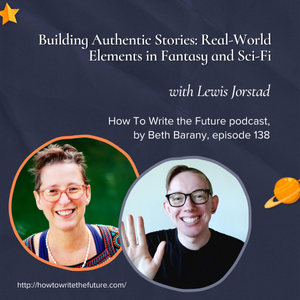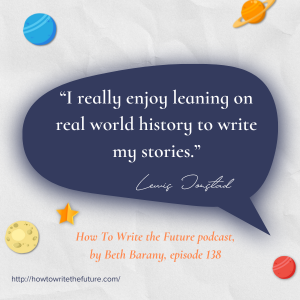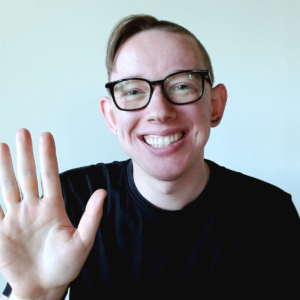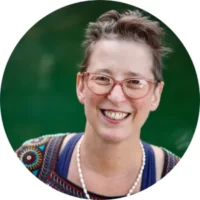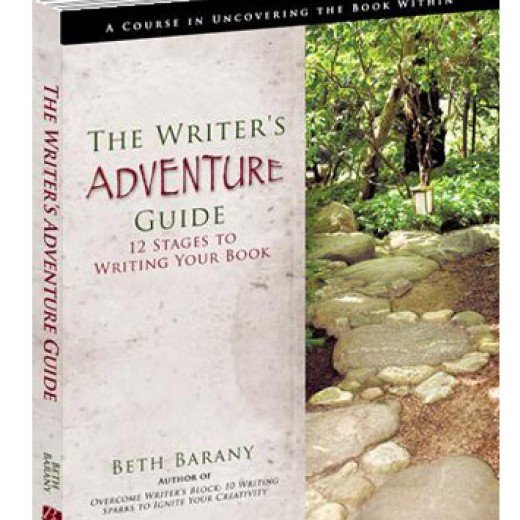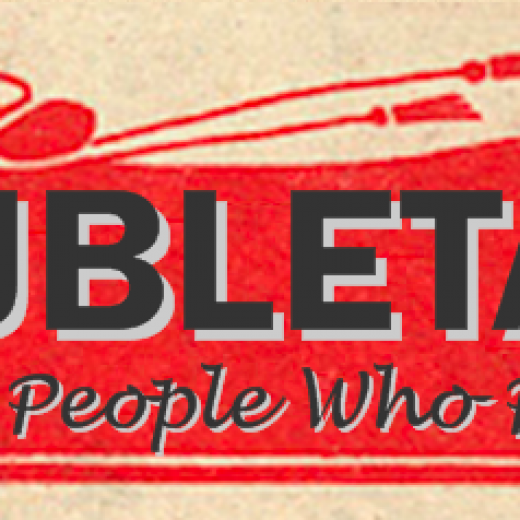Building Authentic Stories: Real-World Elements in Fantasy and Sci-Fi with Lewis Jorstad
Building Authentic Stories: Real-World Elements in Fantasy and Sci-Fi with Lewis Jorstad – How To Write the Future podcast, episode 138
“I really enjoy leaning on real world history to write my stories.” – Lewis Jorstad
In this episode of How To Write the Future, host Beth Barany chats with bestselling author and editor Lewis Jorstad about how to incorporate real-world elements into your speculative fiction stories. They discuss drawing from historical events and share practical advice about crafting compelling fiction that feels authentic while maintaining that crucial suspension of disbelief.
Platforms The podcast is available on Apple Podcasts | Buzzsprout | Spotify | Podcast Addict | Amazon Music| YouTube
RESOURCES
Free World Building Workbook for Fiction Writers: https://writersfunzone.com/blog/world-building-resources/
Sign up for the 30-minute Story Success Clinic with Beth Barany: https://writersfunzone.com/blog/story-success-clinic/
Get support for your fiction writing by a novelist and writing teacher and coach. Schedule an exploratory call here and see if Beth can support you today: https://writersfunzone.com/blog/discovery-call/
About Lewis Jorstad
Lewis Jorstad is a bestselling author and editor who helps passionate fiction writers master their craft and find their readers at The Novel Smithy. When he isn’t busy coaching students or writing books of his own, you can find him babying his houseplants and baking far too many homemade bagels.
Website: https://thenovelsmithy.com/
Transcript for Building Authentic Stories: Real-World Elements in Fantasy and Sci-Fi with Lewis Jorstad
[00:00] Introduction and Podcast Overview
BETH BARANY: Hey everyone. Welcome to How To Write the Future Podcast. I’m your host, Beth Barany. I am a science fiction and fantasy author, and also a writing teacher and a coach. I am super excited to bring a guest on today, but before I do, let me just remind you what this podcast is all about. I’m here to help you create positive, hopeful futures through your writing, through your life.
And also when we do this for others, when we paint stories through our words, we help our readers, our viewers, our audience also create hopeful, hopefully, hopeful pictures for them as well.
Honestly, this is about remaking humanity through our stories. and for anyone who cares about the future, I hope this will be inspiring for you as well.
[00:45] Meet the Guest: Louis Jorstad
BETH BARANY: So I just wanna say welcome to my guest today, Louis Jorstad. Welcome Louis.
Lewis Jorstad: Hi. Thanks for having me.
BETH BARANY: Lewis and I had a long conversation before we turned on record ’cause he and I can just talk forever. Let’s share some of his wisdom with you. So here’s a little bit about Lewis.
Lewis Jorstad is a bestselling author and editor who helps passionate fiction writers master their craft and find their readers. At the Novel Smithy, when he isn’t busy coaching students or writing books of his own, you can find him babying his houseplant and baking far too many homemade bagels.
Now I just have to say homemade bagels. That’s awesome.
Lewis Jorstad: I like putting it in my bio ’cause people always are like, is that a thing? And I’m like, it is a thing and it is surprisingly therapeutic. And you also get to eat at the end of it. So what’s not to like?
BETH BARANY: Yeah, what’s not to like? And I, no, I totally get it. I love baking as well.
And I also love you sharing that you love plants. I have a patio garden and I take care of compost. I have compost bins. That’s one of my happy places. I’m really happy to have you here today at How to Write the Future, and about the craft of fiction and about the art of it as well.
[01:51] Incorporating Real World Elements in Fiction
BETH BARANY: And I thought we would start with this lovely question that you shared with me, which is, how can we borrow real world elements in our science fiction and fantasy stories and really any kind of story in that we’re writing in fiction to ground the stories and also create a more hopeful future in our work.
Lewis Jorstad: So I have a lot of thoughts on this. I’m gonna try to distill it to be a little more focused, but I think not only is it valuable to incorporate real history or real cultures or things that feel familiar to the reader into our fantasy and sci-fi, but I also think it’s something that a lot of us do sometimes without realizing it, especially for people writing very, far reaching or very fantastical or very speculative fiction.
I think it’s easy to forget that we are still being influenced by our real world. And so I really love this conversation because especially in the context of creating a better world, reminding ourselves to pause and think about how am I incorporating real world history, culture, events into this story, whether on purpose or on accident can help us catch a lot of things that we might be doing out of reflex.
But in terms of how to do it well, the first step in my opinion is to just know the history of what you’re incorporating.
So if you step back and you kinda look at your story and like patterns or things that are related to different real events or different real groups of people or cultures, pausing to ask how well do I actually know that place or those people? Do I understand their history? Am I leaning on stereotypes?
Not saying that you are doing it on purpose, but a lot of us do it on accident without even meaning to.
And then how can you, if you find that you don’t necessarily have enough depth to understand that all the nuance of those situations, how can you step back and try to hear a couple different voices from that?
I personally, in my personal writing life, am primarily a dark fantasy writer and I really enjoy leaning on real world history to write my stories. I lean a lot on Appalachian history because I’m based in that area. It feels very close to home, but I always have to remind myself that the history of those areas is complicated and it has a lot of fresh wounds that are still there. And so when I’m writing those stories, I have to be really cognizant of how am I reflecting the people? How am I making a statement? And that statement doesn’t have to be a kind statement, but it’s a statement you have to make sure you’re making on purpose, not so much on accident.
BETH BARANY: And, and speaking from a craft perspective, or even in the phases of your own writing, do you get outside perspective on your work– critique partners, beta readers, editors, to look at your work and help you see that? ’cause I notice, I really rely on other people to say, oh, it looks like you’re implying this, or is this the right assumption?
And it’s always helpful because I can’t always see those things. So I was wondering about what do you do?
Lewis Jorstad: Yeah, I have a handful of beta readers who I love to death and who keep me in check. They always catch me when I slip up and I appreciate them for it.
And yeah, I would say for me, beta readers are probably the biggest thing I lean on, but I definitely have stories that I’m looking ahead to, that I want to work on in the future that are farther removed from my own personal experience. And so for those, I am definitely looking seriously at working with sensitivity readers who are a part of those groups and who can speak to them and make sure that I’m speaking to them fairly.
And I think that’s a judgment call that we have to make as individuals like, my comfort level for, say, the story I’m working on about, Appalachia right now is pretty high because I grew up in the area. I know the area pretty well. I’m still trying to do my homework and do my research, but I feel relatively secure in that.
But for other stories that you may be wanting to tell or that you may be working on, where even if you’re just featuring characters who are very far removed from your own experiences, you have to sit with yourself and decide how can you seek out other voices and seek out help from other people to help you feel comfortable that you are portraying that group or that character, that place fairly and honestly and in more of a nuanced way.
BETH BARANY: Yeah. I really love that. Do your homework, do your research, talk to people who have different perspectives. And I guess also the question that I, unconsciously or consciously bring out to other people who look at my work as, where are my blind spots? What’s missing? I like how you’re opening that up because when we talk about the future, there isn’t one future.
Our stories are really speaking to all kinds of groups and, peoples and with different belief systems and different cultural backgrounds. So I really appreciate that you’re bringing that up.And, so there’s some other craft questions that you have for us here, which I think are really useful and come to the core of what is it to create a story that people just adore and that allow them to forget that they’re even reading.
[06:50] Suspension of Disbelief in Storytelling
BETH BARANY: And so you talk about the suspension of disbelief. Can you share us what that means? and now we’re probably talking to maybe beginners, but also I think for experienced writers, it’s helpful to think about that we are actually creating this suspension of disbelief and what is it and what are some tips on how to create that?
Lewis Jorstad: So it actually ties in really well to the conversation of like, how are we reflecting the real world? So to define our terms, to make sure everyone’s on the same page, suspension of disbelief is when readers let themselves believe a story that they know is not true, and this applies to all genres.
I know we’re talking to sci-fi, and fantasy writers, but even, contemporary romance is still suspending disbelief because the reader knows it’s not true. And we’re having to create a world and characters that kind of welcome them in and say, yes, it’s not true, but it’s still gonna be worth letting yourself get invested in and care about.
And a big part of suspension of disbelief and allowing readers to suspend that disbelief is reducing the resistance they feel at the start of a story.
So when a reader picks up a novel off the bookshelf and they’re flipping through am I gonna enjoy this? Is this worth my time? Should I read any of the other dozens of novels on my two B red list? Should I just binge Netflix for the next five hours? There’s a lot of questions subconsciously, primarily that are happening for readers that create a feeling of resistance. And part of the beginning of our novels is easing that resistance, lowering those barriers to welcome them into our stories and suspension of disbelief is a big part of that.
And why I say that it I think, connects really well to the conversation of how are we incorporating real places and people and events into our stories even, very speculative stories is that one of the primary ways you can help your readers suspend disbelief is by meeting their expectations, by giving them what feels familiar.
And that’s for a few reasons.
On the one hand familiarity is something a lot of readers are looking for, whether consciously or not. If you are a fantasy reader, you probably read fantasy because you love the genre, but subconsciously because it’s a familiar genre and you have the tropes that you like, and you have the voice that you like, and part of that appeals to you.
And so for a reader, when they’re coming in and they’re experiencing that resistance, and trying to suspend their disbelief and get invested in the story, one of the biggest ways that we lower that barrier is by meeting them where they’re already at and saying, here are some things that you’re already familiar with, whether those are tropes from your genre or different conventions that they might be expecting.
But on a possibly even more subconscious level, there’s also what feels familiar about their real world? What do they know about real history or real events or real cultures or people that you are mirroring in your story that they’re latching onto and saying, oh, I understand this. I already have feelings and opinions about this that are helping them develop that emotional investment.
And so that’s why I think, especially for sci-fi, and fantasy, we are creating worlds that are often very different from our real world. And so finding ways to suspend that disbelief is more important than ever, but it also opens the door for suspending that disbelief in ways that are destructive on accident.
Again, that idea of incorporating real people in places to help suspend disbelief, but doing it in a way that is shallow or that leans on stereotypes orthat doesn’t push forward on, okay, maybe this place where these people have a fraught history, but how am I showing a better future and a better option for where those could go, or a more hopeful option, I guess is the right term.
I feel like those, the topics are more connected than you might think on the surface. Even though on the surface, like they seem very separate,
BETH BARANY: Yeah. That’s really cool. I think about how, so I’m writing science fiction mysteries, murder mysteries, so the murder mystery tropes, a lot of ’em are very familiar to a lot of people.
But what I’ve found is my readership is more oriented to the science fiction of fantasy readers. And if you throw in a mystery plot, they’re like, oh, that’s interesting. Versus the mystery readers tend to want, either a contemporary or historical setting, so they aren’t as adventurous, actually. And so I’ve decided I need to signal to my reader very clearly, obviously in the marketing, but also in the opening of the story, how we are on usually as uh a
Uh. Space station. ’cause that’s what I play with a lot, or some kind of spaceship if that’s the case. And how do I signal it in a way that is recognizable, and so therefore familiar, but also, oh, we’re not on a planet and we’re in some kind of sci-fi setting.
And because obviously it’s a created setting, I’m leaning into references that are from other people’s science fiction stories and I’m trying to telegraph something about the culture of the place, which is very challenging in the current work in progress. ’cause I’m trying to invent something versus the first four books in the series, which are, if you’re watching this on video or behind me in the Janey McCallister Space Station Investigator series. They’re all on a hotel casino space station that is very high end. So most people know what a hotel casino probably looks like to some degree in a high end hotel, some ideas. So I can just play with that.
But then I have to, what am I trying to say? I had to think about a lot of things. I had to think about how hotels are run and how casinos are run, and how many people does it take to staff those, and how many people and what kind of people take those jobs.
And it all feeds into the story, which is why my heroine is there and why she’s taking the job there. Anyway, I feel like I went off on a tangent a little bit, but just trying to give some illustration of how we have to mix what readers are expecting to see. And then how do we bring in the new elements and then how do we do it in a way that’s informed?
I went to Las Vegas and did research. I really did, and I even asked someone, what’s the definition of a high-end hotel? What’s the difference between a regular hotel like a Holiday Inn or something like that? Or something that I could afford versus something that is five times, the room rate that I’m paying. What’s the difference?
I got someone in the hotel to tell me and then I was talking to a lot of staff and watching how they worked and I. Just got nosy so I could hear what’s driving people, how do they approach their work? And because I’m writing my story from the backend, I’m not writing about guests coming in like a James Bond story.
I’m writing about people who use the secondary elevators and who support the guests. ’cause my heroine is one of those people. That’s just a tiny taste of the kind of research that I did. and, I love that you’re encouraging people to do that research.
And then when it comes to suspension of disbelief, I love that you’re sharing about understanding your genre, understanding your tropes, and giving people what they want, really helps them, that suspension of, disbelief. And then you have this great question, which ties into what we’ve just been talking about, which is: why do readers believe some stories more than others?
Is that a continuation of keeping, what makes a reader go, oh yeah, that could happen. What brings them to that level of acceptance?
[13:44] Cultural Familiarity, Reader Engagement, Assumptions about the World
Lewis Jorstad: I think again, it is that giving them what’s familiar, meeting their expectations, but more broadly mirroring things that feel familiar to them on a broader cultural level.
I actually was very fortunate to have a really fascinating conversation with a writer who was from China growing up, And we were talking about why, in their opinion, a lot of Chinese fantasy does not take off in the States, which is where I’m based in the United States. Because we were talking about how, a lot of the tropes are similar specifically for them, YA fantasy.
But a lot of the tropes are similar. It’s still YA, it’s got all the trappings of YA. All the genre expectations are there, but a lot of those stories just don’t catch here. And we were trying to sort through, I wonder why that is.
In that discussion where we landed is that, again, it’s not just meeting their genre expectations, but it’s meeting the reader’s assumptions about the world.
And the world looks very different in China than it does in the United States, and so us young adult readers are picking up that story and even though it’s a good story, like fantastically written, very interesting and certainly resonates with some readers, even if they’re not from that part of the world.
It for a lot of readers just doesn’t connect with them the same way because it’s bringing up cultural elements and expectations and groups of people and places that they don’t have a frame of reference for that they can’t relate to on that subconscious level. And I think that’s one, almost privilege maybe that American writers have, because American culture is so widespread, just the way things panned out.
American culture is actually somewhat familiar to someone in India or China or Japan or France or Germany, and books written by American authors can often resonate to a broader audience than say, a book written by someone in Argentina about Argentinian culture and all of the experiences that feel very normal there, but maybe don’t cross culture as well.
And so I think that’s something to think about for our own stories is whether we’re writing something where we’re purposefully trying to say, lean on our own culture, or even if we’re borrowing from other cultures, is: who are our readers and how are we connecting with them and helping them experience that in a way that, again, feels familiar in small ways? So that they’ll suspend their disbelief and they’ll get invested in the story.
But what’s also really fun about that is that on the back end, you don’t have to just give them what feels familiar and leave it at that. I think part of–to the point of this podcast of, how are we creating a more hopeful future? How are we showing a way that the world could maybe be better or more equitable, or whatever your specific focus is, the way you like to think about it?
Is that when you introduce those familiar cultural elements or familiar places, you also have the opportunity to test them or change them or challenge them in really interesting ways.
To draw on what I mentioned earlier, the novel I’m working on that is primarily based in Appalachia. I think the broader culture of that will feel familiar to a lot of my readers because most of my readers are American and that culture is not that drastically different than a lot of places.
They can, I think, relate to that, but also as someone who has grown up in that area and sees the wounds of that area, part of what I’m really excited to do in my story is as we get about halfway through the story and I start twisting things and adding new elements, part of what I intend to do is how can I challenge their expectations and their assumptions about this place, these people, this culture, to encourage my readers to think about the world in a different way, and to see, again, to that point of a more hopeful future, to see how we can move forward in a way that treats everyone with more respect and treats them more equally and starts to heal some of the wounds of these places.
And so I think that is something for my case, because I’m specifically leaning on a certain culture, is maybe more top of mind for me than it might be for other writers, which is absolutely fine.
But I think even for, in your situation writing about a sci-fi sort of casino hotel, there’s a lot of room there. I loved how you’re focusing on the staff more than the patrons. There’s a lot of room there to take what your readers are assuming about that place or those people and, subvert it or twist it or challenge it in ways that gets them to think about the world in slightly different ways.
[18:11] Test and Challenge
BETH BARANY: Yeah, and honestly, I don’t know if I did, but, I love this notion of test and challenge because what I’m actually trying to do in this coming work is, Is portray a location, a space station that has a different economy, a different government system, a different way of creating their environment, a different way of interacting together different assumptions about what does it mean to be in community.
And my whole vision for this series is that every space station is gonna be organized differently, and. Therefore I have an opportunity to talk about different cultural and social interactions and different assumptions about how people treat each other. my main character gets to be the outsider. So she gets to explain and wonder. And then because she has traveled a lot, she’s also super sensitive to the fact that people have different cultural customs around different things. And so she’ll think about, oh, I’m not really sure the right way to do this, but I just gotta forge ahead so I’m gonna, I’m gonna do it or say something. And she has to decode the way they talk with their little sayings that she doesn’t understand what they mean exactly. She doesn’t know the cultural context. And so I think writing science fiction/fantasy lets us play with different ways of being in the world I like what you were saying, the assumptions about the world. And If you’ve never traveled abroad, then science fiction and fantasy is a great way to travel and explore different cultural assumptions.
And just ’cause it’s in the zeitgeist– Dune. I read Dune when I was 19. I read all the books and instead of studying for finals in college, took some time to take a complete break and basically get like a political economy education while I was reading Dune. It really helped me understand that political economy was a thing. I hadn’t studied that specifically. That wasn’t my domain in school, but I got to see oh look, this society’s organized this way and the society’s organized that way in the sand and power and struggle and economics. It actually gave me a whole new understanding of how societies are put together that I had never had before. So that’s just one example of how–.,
Lewis Jorstad: So I really love that example though, because I think that’s another power of fantasy and sci-fi fiction more broadly. But I think especially fantasy and sci-fi is I think some readers come into stories with their guard up because they don’t want to be told how to think about the world. They don’t want to be told to think about things differently than they already do. And fantasy is this kind of it. It’s not about the real world.
And so it’s this like safety blanket of people let their guard down a little bit and are more open to seeing the world slightly differently in the context of fantasy.
And I think a power that we have as writers in those genres is to let our readers take their guard down, let them suspend their disbelief, let them get invested in the story, and then gently offer a different way of looking at the world.
We’re not beating our readers over the head with it. They have to come to those conclusions on their own. They have to complete that circle on their own. But we can be a part of introducing them to, to people and ways of thinking and ways of living that are different than anything they may have ever experienced before.
And that has a lot of power. That can do a lot in a reader’s life to change the way they approach the world for the better oftentimes.
BETH BARANY: Absolutely. I feel like there’s so much more to talk about here, but we’re gonna, we’re gonna end here because otherwise we’ll just talk for hours ’cause there’s so much to talk about.
And maybe another time we, I can have you back and we can do another dive into this because it’s so juicy and,I guess I have one more question, which is–
[21:34] Advice for Beginner Writers re: Cultural Assumptions of their Readers
BETH BARANY: Say you’re a beginning writer, you’re working on your first novel, maybe you’re in edits, which is where I support authors a lot, and you are wondering, and I get this question and I have this question: I don’t know what my readers are thinking.
I don’t know what their, cultural assumptions are. I don’t know necessarily what’s familiar to them, so I can use that in my choices and what I portray. What do you advise to someone like that?
Lewis Jorstad: My first answer would be to provide a little bit of comfort, and that is that for many of us, especially if you’re a beginner writer and you’re early on this journey, in my experience as an editor, most of the writers I’ve worked with who are at that stage are really writing for themselves. The novel they’re writing, their ideal reader is themselves, and there’s a broader conversation to be had about finding your ideal reader that’s related to publishing, that’s a different topic.
But in the realm of.suspension of disbelief in world building. How are you meeting your reader’s expectations? To some extent, I think that’s room for us to reflect on our own expectations, because a lot of us are, do start out writing for ourselves, writing the story we want to read, and then you have to ask the question of, why is that the story you wanna read?
Why are you making the choices you’re making?
A question I challenge all of my students with is:what do you believe about the world and how is that leaking into your story?
Because many of the writers that I work with have never really thought about that before. I’m not challenging them on it to say you have to change it, but to do it consciously to know why are you making these decisions?
And that could be as far reaching as writing Dune with a lot of big statements about political economy. But it’d also be as simple as writing a romance subplot. What is your worldview?
What’s your assumptions about love and relationships and how is that leaking into the way you’re telling this story?
That can provide so much guidance for us as writers, and I think for someone who’s earlier in that journey, that’s really where I would start, is before you start worrying about what other people think and what other people will take into your story, you first need to understand what you are bringing to your story.
BETH BARANY: I love that. That’s such a great inquiry for all writers to take. And, I, I definitely notice when I edit people’s work, you can tell how far they’ve taken their thinking and if they need that encouragement to be asked that question and to to dig into that question for themselves. So I love that.
And I think you’re absolutely right. That first book is, every book maybe is for the writer first and foremost.
So use yourself as the template, get really clear about your own assumptions, and I love that part. I hadn’t considered that part of how is it leaking into your story? And sometimes you get your beta readers to help you with that and point that out to you.
And so you start to learn, basically a kind of textual analysis of your own work, and you’re like, oh, I had this character say that. Oh, yeah, I totally believe that. And you start to recognize your beliefs and how they’ve come out in all these different ways in your story. So I just love that so much.
[24:30] Conclusion and Contact Information
BETH BARANY: So Louis, if people want to follow up with you, find out about what you’re doing and all the wonderful programs that you offer fiction writers, how can they find you?
Lewis Jorstad: So you can always find me at: thenovelsmithy.com. That’s my hub on the internet, but for anyone who’s listening who wants to maybe go a little bit deeper, I know we were talking about primarily world building and suspension of disbelief, but I think we were talking a little bit how that sort of bleeds into our characters as well.
I actually have a free workbook character interview guide that’s called “50 Questions to Ask Your Protagonist.” One of those questions is what is their worldview and how is that shaping the story? Oftentimes our protagonist’s worldview is also our own. So that’s worth, I think, interrogating, for a lot of us.
And if you’re interested in that, you can find that at: thenovelsmithy.com slash 50, the number dash questions. And yeah, that’ll put you on my email list. I email people in my orbit once or twice a week with writing advice, tips, cool things going on. it’s a pretty fun space to be if I do say so myself.
So I would love to see anybody there who might be interested.
BETH BARANY: Awesome. We’ll definitely make sure that link is in our show notes and people can check you out and also find it through your site, the novel smithy.com. Is that right? Yeah. Thank you so much for being here, Louis. So much fun to chat with you.
I’ll have you back, we’ll do some more deep dive into how to write the future and dive into craft. I think it’s so much fun to talk about with you. So thank you so much for being a guest today.
Lewis Jorstad: Absolutely. Super happy to be here.
[25:58] Check out the World Building Workbook for Fiction Writers
BETH BARANY: I want to invite you to check out my world-building workbook for fiction writers. I am a fiction writing teacher. If you need help with your world-building and you want to process to bring yourself through so you can make decisions about your story’s world, then I invite you to sign up for my World Building Workbook for Fiction Writers.
All right. That’s it for this time, everyone. Write long and prosper.
Loved this episode? Leave us a review and rating here: https://www.buzzsprout.com/2012061
Need instructions on how to leave a review? Go here.
***
ABOUT BETH BARANY
Beth Barany teaches science fiction and fantasy novelists how to write, edit, and publish their books as a coach, teacher, consultant, and developmental editor. She’s an award-winning fantasy and science fiction novelist and runs the podcast, “How To Write The Future.”
Learn more about Beth Barany at these sites:
Author site / Coaching site / School of Fiction / Writer’s Fun Zone blog
CONNECT
Contact Beth: https://writersfunzone.com/blog/podcast/#tve-jump-185b4422580
Email: beth@bethbarany.com
LinkedIn: https://www.linkedin.com/in/bethbarany/
IG: https://www.instagram.com/bethbarany/
TT: https://www.tiktok.com/@bethbarany/
FB: https://www.facebook.com/bethbarany
X: https://twitter.com/BethBarany
CREDITS
- EDITED WITH DESCRIPT: https://www.descript.com?lmref=_w1WCA (Refer-a-Friend link)
- MUSIC CREDITS : Music from Uppbeat (free for Creators!): https://uppbeat.io/t/soundroll/fuzz-buzz License code: UMMKDRL02DFGKJ0L. “Fuzz buzz” by Soundroll. Commercial license: https://musicvine.com/track/soundroll/fuzz-buzz.
- DISTRIBUTED BY BUZZSPROUT: https://www.buzzsprout.com/?referrer_id=1994465 (Refer-a-Friend link)
- SHOW PRODUCTION BY Beth Barany
- SHOW CO-PRODUCTION + NOTES by Kerry-Ann McDade
C 2025 BETH BARANY
For more “How To Write the Future” episodes, go here.
If you’d like to invite Beth onto your podcast, drop her a note here.
✅ Like the work we do? Tip us! https://ko-fi.com/bethbarany

